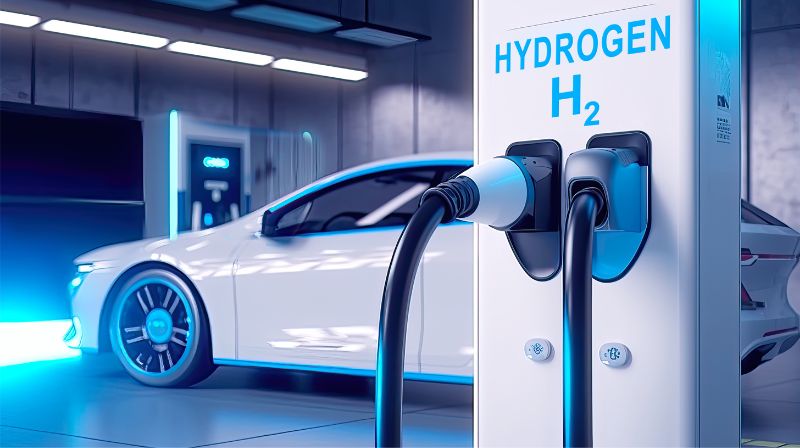Keratin From Chicken Feathers Powers Fuel Cell and Hydrogen Innovation
Researchers from Zurich and Singapore are testing the applications of keratin to aid in the creation of less expensive, more sustainable fuel cells and hydrogen production.
Researchers have discovered a way to repurpose keratin derived from chicken feathers and other organic waste for fuel cells and hydrogen production. The process, created by a team from ETH Zurich and Nanyang Technological University (NTU) Singapore, could result in fuel cells that are more cost-effective and sustainable.
Hydrogen fuel cell vehicle. Imaged used courtesy of Adobe Stock
Chicken Feather Fuel Cells
Fuel cells are gaining popularity as the energy industry transitions to more sustainable and environmentally friendly processes. Their importance extends to various sectors, from vehicles to stationary power generation, and they continue to be the subject of active research and development.
Employing a straightforward and eco-friendly procedure, the research team extracts keratin protein from the feathers and transforms it into ultra-fine fibers called amyloid fibrils. These amyloid fibrils can be used as part of a fuel cell membrane.
Keratin extraction process. Image used courtesy of ACS
Traditionally, fuel cell membranes are crafted from highly hazardous chemicals, often called “forever chemicals.” So, while using fuel cells is an environmentally friendly alternative to fossil fuels, the manufacturing process poses environmental concerns. The membrane devised by the ETH and NTU team relies primarily on natural keratin, a biodegradable and environmentally friendly material.
Even without chicken feathers, keratin is an abundantly available resource. It helps, however, that chicken feathers are 90 percent keratin and regularly discarded. Thus far, the lab-manufactured membrane is already up to three times more cost-effective than conventional membranes.
Future Hydrogen Applications
In addition to using the new membrane in fuel cell application, the research team is testing the application in water-splitting devices to produce hydrogen.
Hydrogen is an emerging option as a sustainable energy source, but it faces its own challenges. Hydrogen is a readily available element, but not in its pure form. Currently, producing hydrogen requires a substantial amount of energy due to its separation from other compounds.
Hydrogen is retrieved through electrolysis when a direct current is applied to water, forming oxygen at the positively charged anode and releasing hydrogen at the negatively charged cathode.
The researchers believe the recently developed membrane could aid electrolysis because of its proton permeability. The next phase involves a comprehensive examination of the stability and durability of their keratin-based membrane, with the aim of potential enhancements if deemed necessary.
Keratin’s Role in Emissions
Annually, approximately 40 million metric tons of chicken feathers are subjected to incineration, a practice responsible for significant carbon dioxide emissions and the release of harmful toxic gases, including sulfur dioxide. The keratin-extracting process could make use of these waste materials.
Approximately one-third of the world’s food is wasted annually—or around 1.3 billion tons. In the U.S., annual greenhouse gases generated from food waste are equivalent to the emissions of 32.6 million cars. When food is wasted and discarded, it often finds its way to landfills or incineration facilities. Organic matter from food decomposes, releasing methane, a potent greenhouse gas, into the atmosphere. Food requires water, energy, land, and other inputs to grow, harvest, process, and distribute. When food goes to waste, it wastes these resources.








